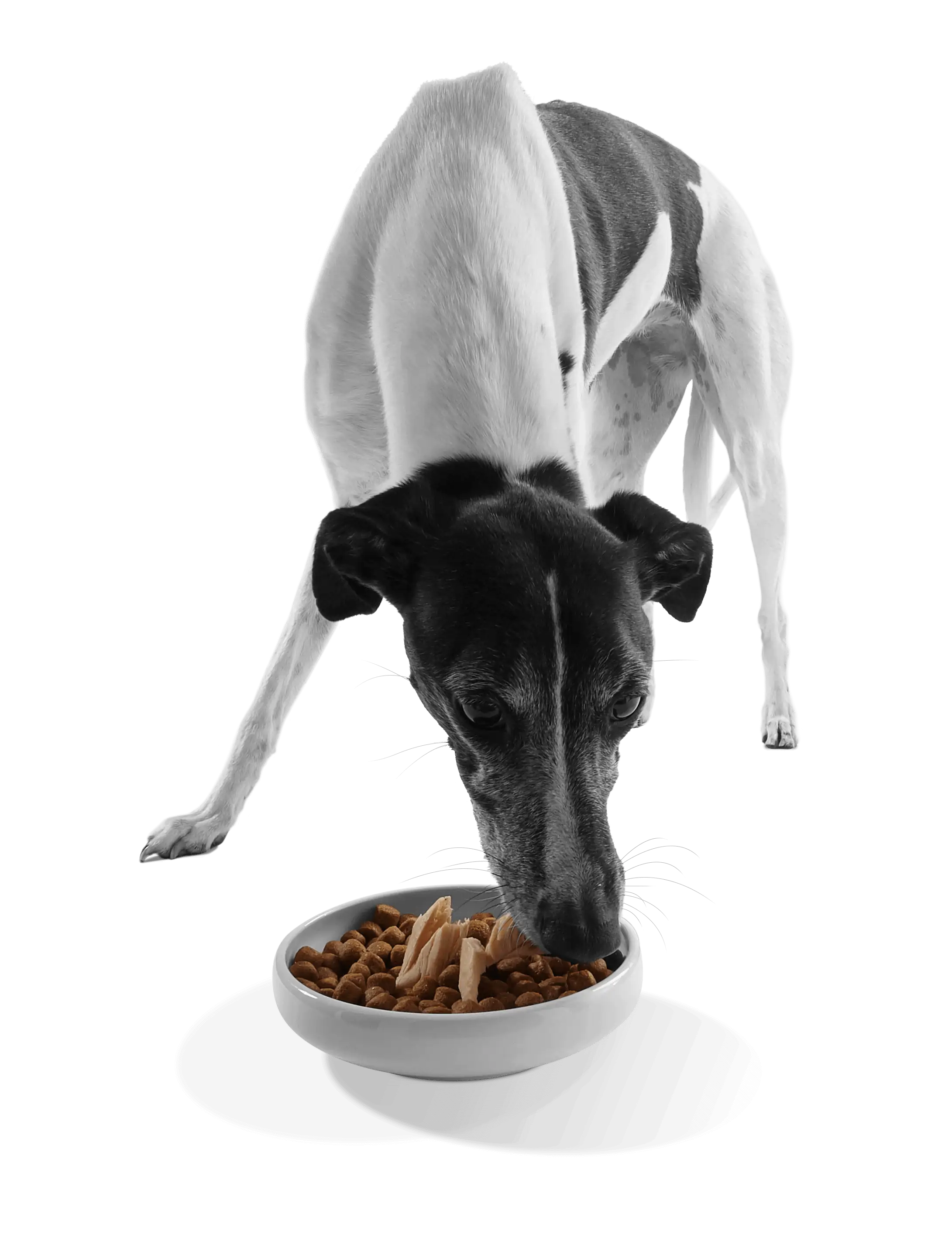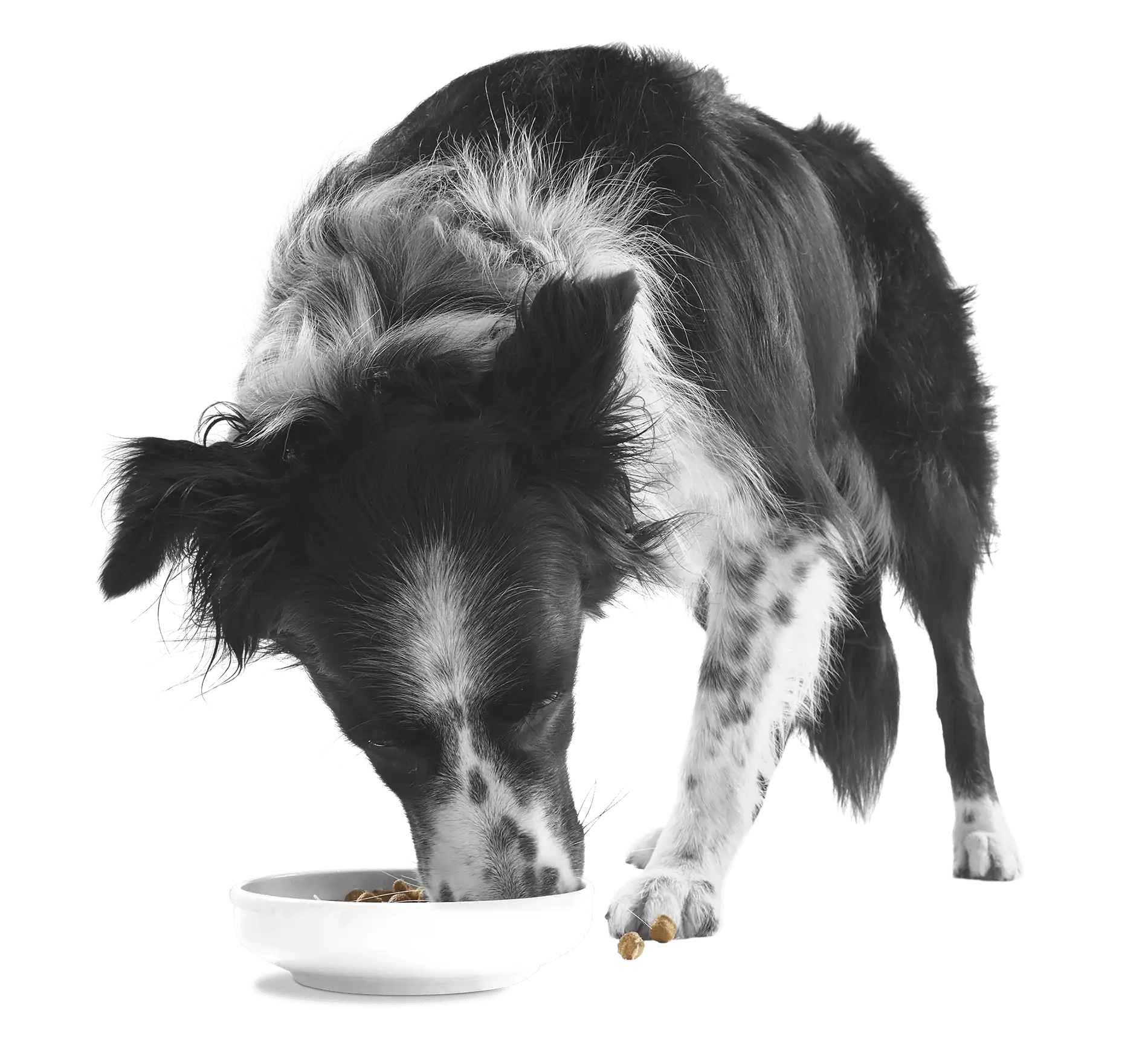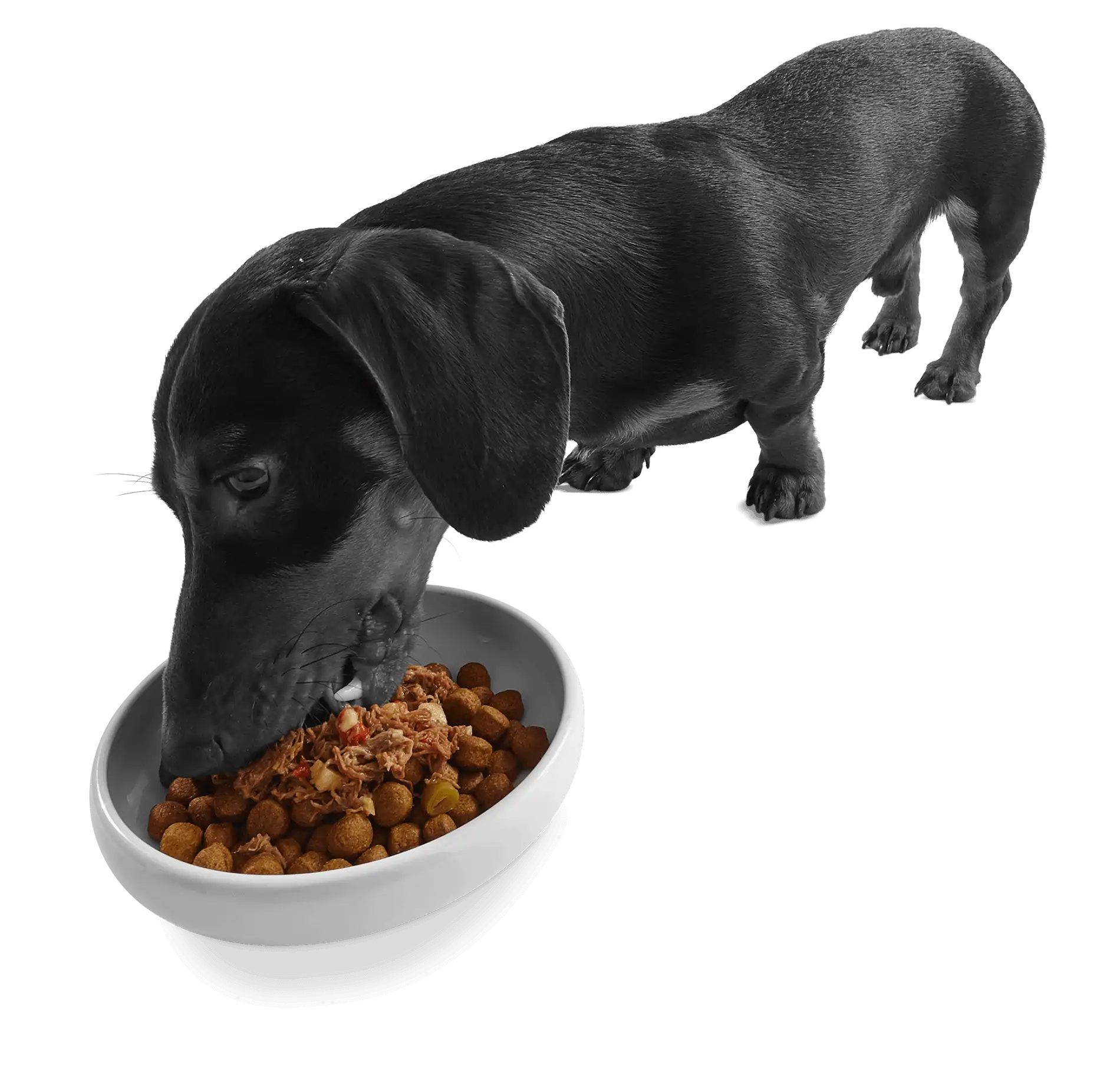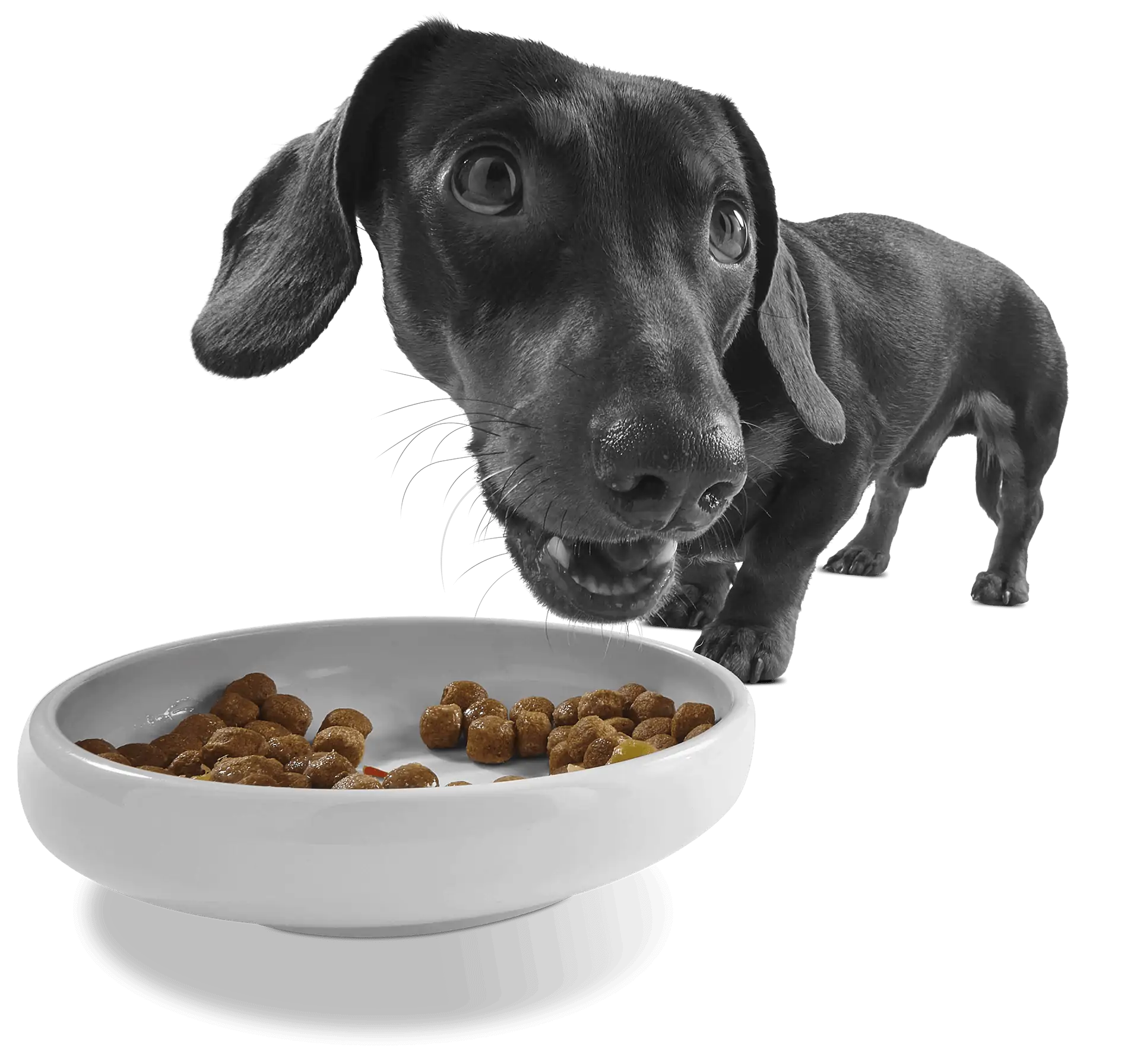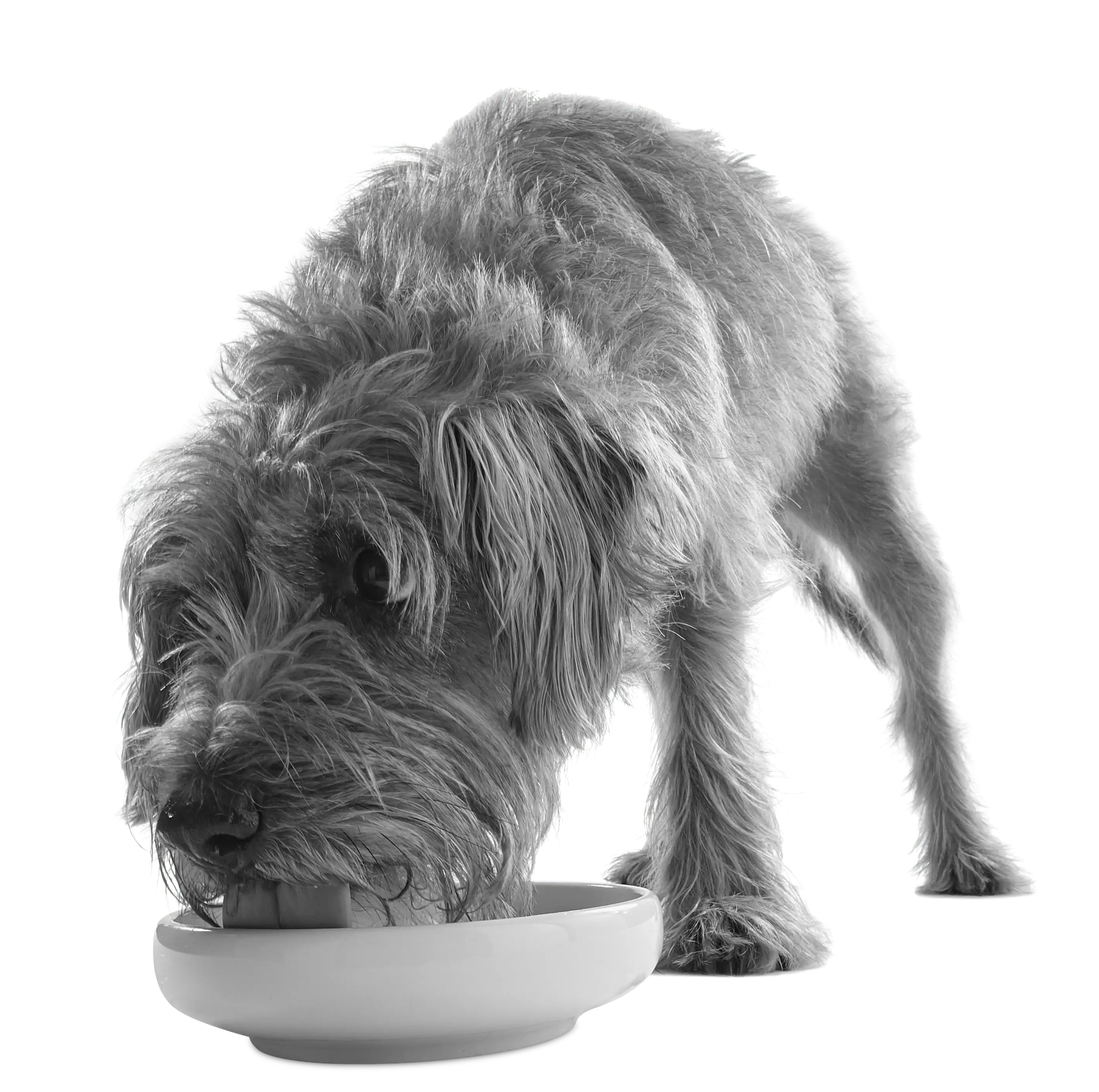As we grow older the way we see, hear and smell the world slowly changes.
It’s the same for the dogs in our lives, too.
Changing taste buds can have a big impact on what our furry friends love to eat.
Here’s all you need to know about sensory decline in older dogs.
What is sensory decline (and why does it happen)?
Dogs have the same five senses as humans – vision, hearing, smell, taste and touch.
While some are more highly developed than ours – dogs are renowned for their acute sense of smell – they rely on them in very much the same way we do.
Sensory decline is what happens when age begins to catch up with our four-legged friends, and their senses slowly begin to diminish.
You may notice them stumbling around more, bumping into furniture. They may not respond when you call out their name, or perhaps they’re more easily startled when you’re close by.
Other signs include a sudden lack of appetite, or changes in behaviour resulting in bouts of confusion or aggression.
Sensory decline can affect dogs at different stages of their later life, but pet parents should begin keeping an eye out for symptoms from around a dog’s seventh birthday. This is generally considered the age most dogs become seniors.
These changes can be subtle, and more often than not are simply down to just getting old.
However, they could also be caused by an underlying condition that’s having a negative impact on your dog’s health.
It is always better to be safe than sorry.
As soon as you begin noticing what you think is sensory decline, it’s a good idea to book an appointment with the vet. This way you can be certain it’s nothing more serious.
Making food more appealing for ageing dogs
It’s extremely common for senior dogs to lose interest in food.
Our hungry hounds love a good feed, but as their taste buds begin to decline, so can their appetite….especially if they’re munching on the same foods over and over again.
Combine this with the fact dogs also love to smell what they’re eating, and it’s easy to see how sensory decline can lead to bland and boring mealtimes for our furry friends.
Eating less food poses obvious health risks for dogs – at any age – so it’s our mission here at Applaws to create recipes that bring fun, flavour, and of course, nutrients, to the bowl.
With that in mind, here are three things you can do almost straightaway to try and put the wag back in your dog’s tail at mealtime.
● Age-specific food. As your dog matures, you may want to consider trying age-appropriate senior dog food. These recipes are formulated to meet changing needs, and could be the palate pleasers your furry friend has been crying out for. Trying different foods in general – as long as they are part of a complete and well-balanced diet – is another way of making senior dogs’ taste buds tingle again. Maybe the new dish has a stronger smell than what they’ve been used to, or maybe it includes tasty new ingredients they’ve never had before. If you are thinking about changing your dog’s diet, ensure the process is gradual.
● Heat their meals. Warming up dog food is a nice simple way of making mealtime more enticing. Heat brings out all those mouth-watering aromas, ideal for dogs struggling with their sense of smell. Not only that, it can also enhance flavours, which may stimulate some of them older taste buds. When warming wet dog food, you should always be looking to serve it at around room temperature. Too hot or too cold, and a fussy pooch can easily be put off. Soaking dry kibble with warm water will also bring out those foodie scents. The softer texture can also make it easier for senior dogs struggling to chew.
● Switch to a natural diet. Natural ingredients in dog food recipes are real taste enhancers. Dogs thrive when eating natural foods with no additives. After all, that is what their bodies were designed for. Wholesome, fresh ingredients smell and taste much better than any heavily-processed offering.
So, if your senior dog has been turning their nose up at mealtime recently, nutrient-rich foods could be just the thing to tempt them back to the bowl. Senior dogs can also be more prone to tummy trouble. High-quality ingredients, with no pesky preservatives, are much kinder on their bodies.
Is switching diets necessary to alleviate symptoms of changing taste buds?
Switching diets is certainly one way of dealing with a senior dog’s evolving taste buds.
Dogs’ nutritional needs change as they age, along with their palates, so serving up the same food each and every day is not only potentially boring for them, it could also be really unhealthy.
While consistency is key when we’re talking about doggy diets – we don’t want to be switching them all the time – introducing new foods is how we can help ensure mealtime remains appetising. Applaws Taste Toppers were created with this exact goal in mind.
Recipes like our Chicken Breast with Broccoli, Apple & Quinoa in Broth Pouch and our Lamb with Pumpkin, Sweet Potato & Peas in Jelly Tin are delicious dry dog food mix-ins that will bring taste and variety to your four-legged friend’s bowl.
We have developed our recipes to ensure they provide high-quality proteins, superfoods, fruits and vegetables, along with natural flavours, succulent moisture and a host of different textures.
Your senior dog’s taste buds won’t know what’s hit them…and the nutrient-loaded goodness that comes with each serving is a body-boosting bonus.
Remember, changing a diet too quickly can bring on indigestion, vomiting and diarrhoea – so take things slow, even when introducing complementary mix-ins. We recommend trying one tin or pouch per day to begin with, making sure your dog is happy with the new addition.










